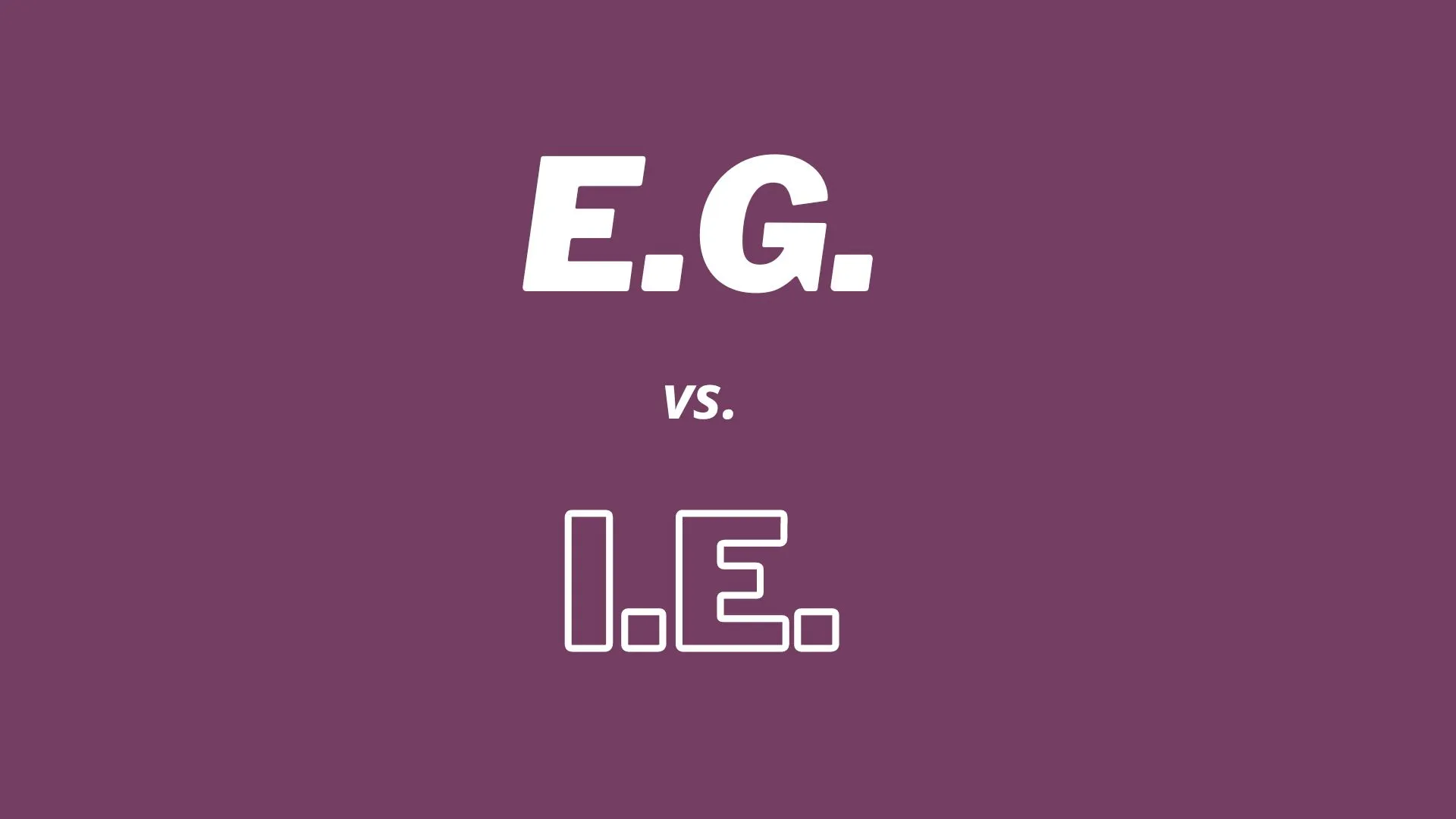

E.g. vs. i.e. are two abbreviations derived from Latin and used in written text. Understanding the nuances of these abbreviations, when to use them and what they mean is important for anyone learning or teaching English.
|
|
E.g. |
I.e. |
|
Usage |
Use when you want to say “for example” or “such as,” followed by a list of one or more items. |
In a text where, “that is” can be used for clarity or to help the reader understand the meaning of a term or phrase. |
E.g. and i.e. are both abbreviations used to offer additional information or clarify things. However, these abbreviations cannot be used interchangeably. Here is the primary difference between e.g. and i.e.:
E.g. comes from the Latin phrase exempli gratia, and is used to mean “for example.” You can use this abbreviation in the following ways:
When you use e.g. in your writing, it’s important to remember:
If you see an abbreviation you don’t know (e.g. or i.e.), it’s best to look up its meaning.
I.e. comes from the Latin phrase “id est.” Id est means “that is” and is frequently used to explain a term that may be new or unknown to the reader. Additionally, you may find this abbreviation used when the writer is trying to clarify a statement.
You’ll find i.e. used in written text, on websites online and anywhere you can read English. A few examples of this use are:
You may find i.e. used with parentheses or brackets, but you can also use them with a comma or dash.
Understanding the difference between e.g. vs. i.e. is important because you cannot use these abbreviations interchangeably. Use i.e. to explain a term that may be unknown to a reader, and use e.g. when you want to provide the reader with a list of examples. Remember that you can place e.g. and i.e. in parentheses or brackets, or you may add them after a comma or dash when writing text.
Date: January 31st, 2023
 Rob
Rob